Cinema and literature are rife with examples of young people who possess the dangerous and exhilarating combination of raw talent and immense ability—and a certain lack of experience necessary to channel it effectively, often at the world’s peril. Jean Grey comes to mind. Hercules. Billy Batson. Harry Potter. Heck, even Cher didn’t quite know how to use her powers for good until the third act of Clueless.
And, of course, there’s that little saying: “With great power comes great responsibility.” Peter Parker knows what’s up.
The beauty of each of these stories is that, despite their struggles, despite the missteps and mistakes these characters make, when they’re given the freedom to explore and experiment (under the watchful eye of a wise counselor, we hope); when they finally and fully step into their own; when they flip the script and use their talents and abilities—i.e., their powers—their own way, that’s the moment they become virtually unstoppable.
Who knows this better than a young padawan on the journey to becoming a Jedi?
To celebrate Star Wars Day on May 4, we thought we’d see which of our favorite leaders from the Star Wars universe, Jedi or not, embody the dimensions of the Leadership Circle Profile. We’ve started with the innermost eight: relating, self-awareness, authenticity, systems awareness, achieving, controlling, protecting, and complying. How’d we do?
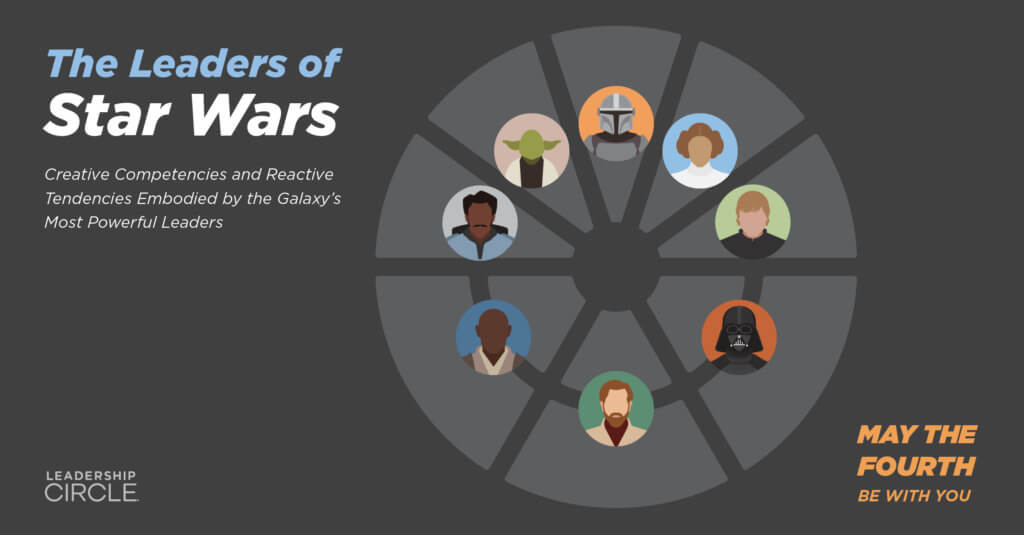
The Leaders of Star Wars
Reactive Tendencies
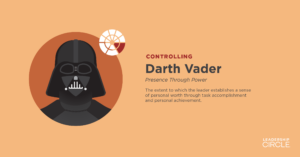
One could make the argument that Darth Vader only leans into the controlling aspects of his personality because the Jedi order tried so blatantly to control his every move from the time he was a child. In fact, it has been theorized that because Anakin had been given so much freedom as a child, his transition to a more rigorous and disciplined Jedi lifestyle was bound to fail. He simply was not built to be a rule-bound soldier. But once he felt betrayed by those that had controlled him for so long, he reacted the only way he knew how, by forcing the universe to come under his control. And for a time, it created order and a kind of uneasy peace in the universe. But ultimately, that control could not last. The good news for Vader is that upon giving up that control, he found true freedom from the emperor who had manipulated him his whole life. As it turns out, the tighter we hold on to things, the less likely we are to actually cherish them.
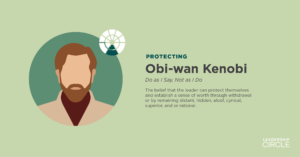
Most people don’t know this, but Obi-wan spent most of his life protecting the Skywalker family. From serving as Leia’s protector after she was kidnapped to watching Luke grow on Tatooine, to serving as Anakin’s Jedi master, Obi-wan was the knight designed to protect the first family of the Force. Now, you could argue that at times, he was not very good at his job, but is heart was always in the right place—and that is exactly what protecting is about. Obi-wan protected others but often did so at his own expense and, sometimes, at the expense of what those in his care really needed. While Luke and Leia did eventually become who they were meant to be, that only happened when Obi-wan realized that to protect them both, he had to let them go. And so, in a heroic act of sacrifice, he gave himself up to Darth Vader and set Luke and the Jedi order upon their eventual path of redemption.
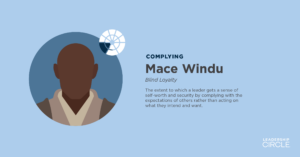
The baddest Jedi in the universe was also perhaps the most compliant. While you could argue that his purple light saber shows a kind of reckless regard for all Jedi traditions, Mace Windu’s surefire arrogance and need to do everything the Jedi way led to an inability to see the crumbling foundations around him. In fact, as Mace Windu tells Anakin Skywalker that he is a Jedi master but not welcome on the council, he is doing so to comply with old and outdated Jedi traditions, masking his fear with compliance and control. It is only when Palpatine reveals himself to be a Sith Lord that Windu’s fear grows. His tragic death is one of his own making, not realizing that by complying with old laws and standards, he doomed himself to be a relic of an order that no longer had the power he thought it did.
Creative Competencies
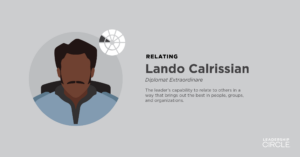
The most loveable rogue in the galaxy isn’t Han Solo. It is Lando. Han Solo works, well, solo (Chewbacca notwithstanding), but Lando? That guy can relate to anyone. When he was the Chancellor of Cloud City, it was his ability to relate to Darth Vader that made a dire situation far less so than it otherwise could have been. Later, Lando’s ability to relate to the entire rebel fleet and serve as commander of the Millennium Falcon allowed the rebels to complete their mission of destroying the Death Star. Even early on in his life as a grifter and scoundrel, Lando related to everyone that came through the doors of his gambling establishment with a cool charm that belies a frighteningly fast intellect. All in all, Lando uses his relating powers for good, usually, but he isn’t above a good sales job every now and again.
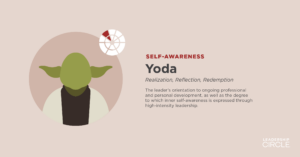
When 900 years old you are, self-awareness you most certainly should have attained. Master Yoda has gone through a journey of self-awareness over the course of the Star Wars saga. In the waning days of the Republic, even Yoda was deceived by Palpatine and the Sith, but upon the realization that his own pride contributed to the downfall of galactic democracy, Yoda exiled himself to Degobah, where he took time to reflect on his failure. Ultimately, it was this decision that prepared Yoda for redemption when he trained Luke Skywalker, but without the awareness those 20 lonely years on the swamp planet brought him, there might never have been a successful rebellion.
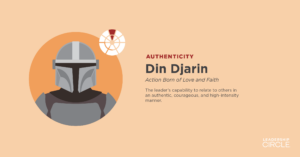
The Mandalorian might be the most authentic person in all of Star Wars lore. While he is fiercely loyal to his creed, he is even more loyal to the person that matters most to him, his mysterious child companion Grogu. It is widely known that Mandalorians are not to remove their helmets in the presence of others for fear of breaking their creed. But Din Djarin not only removes his helmet at a critical point in the development of his child, he does so out of love for what he believes in most. If that isn’t being authentic, we don’t know what is.
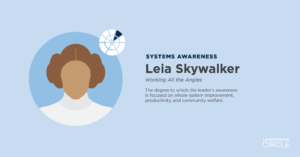
The once and future Galactic Ruler and Princess of Alderaan knows how to work all sides of an issue. Her ability to straddle the line between rebel and diplomat shows a broad understanding of all the leadership systems at play in the universe. In short, she knows ALL the rules for ALL the systems, which makes her uniquely qualified to break those rules in all the best ways. Only when her father realizes who she truly is, does she finally reveal her true self to the world. But this entire time, Leia knew exactly what she was doing and whom she was manipulating. Luke may get all the credit for destroying the emperor, but it was Leia who set the foundation for that momentous act to occur.

“I am a Jedi, like my father before me.” Those words, spoken in triumph to the evil Emperor Palpatine provide the culmination of the first Star Wars trilogy. Early in the very first Star Wars movie, as Luke is whisked away by Obi-wan Kenobi on his first adventure, Luke tells the old Jedi master that he wants to learn the ways of the Force. After losing friends, mentors, and even his hand, Luke achieves his greatest desire—to become what his father was meant to be. To master the Force is not easy, but Luke achieves this monumental feat through a combination of character and grit, cementing his legacy as the true chosen one.
May the Fourth Be With You
Like all young padawans learning to harness the power of the Force, young people (the nonfiction kind) first must experiment with various leadership styles and approaches before they come into their own. Emerging leaders need space, safety, and opportunity to grow. Of course, having Yoda in your corner doesn’t hurt.
Special thanks to Leadership Circle’s resident Star Wars expert, Andrew Parker, for his assistance with this piece.





